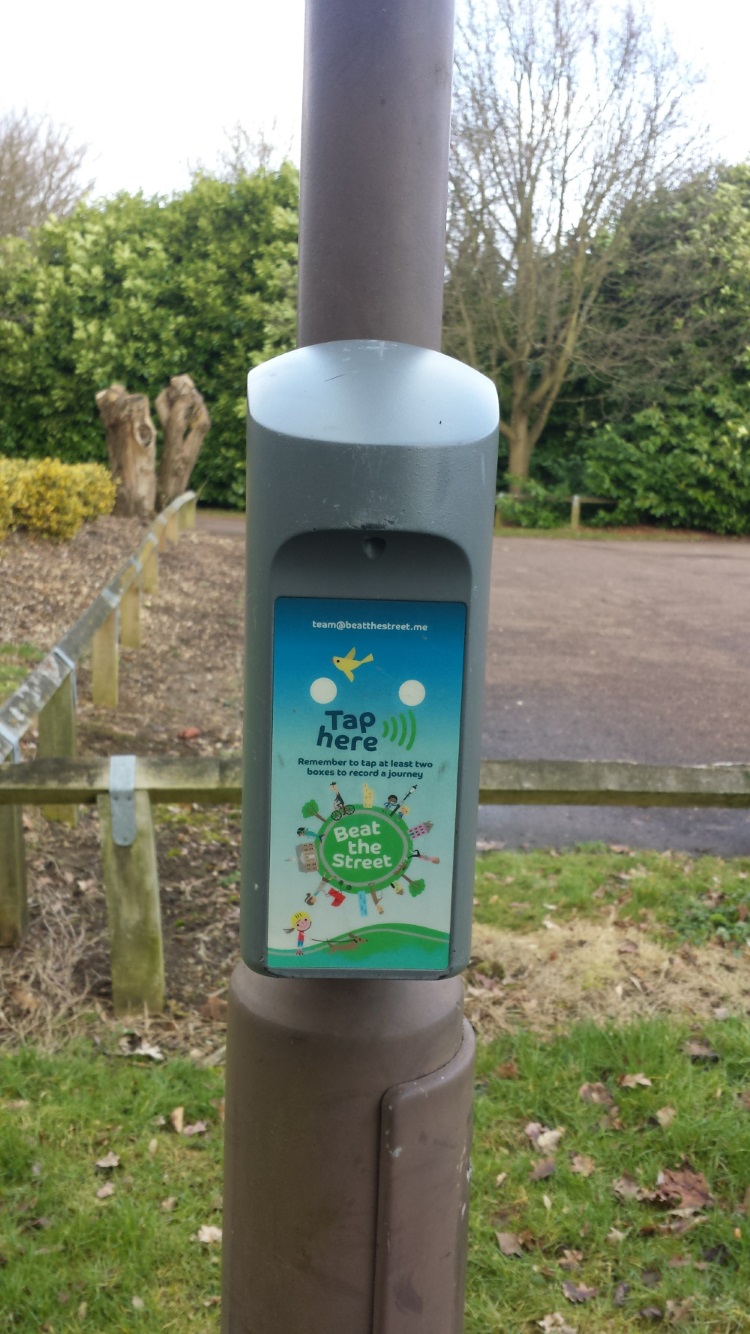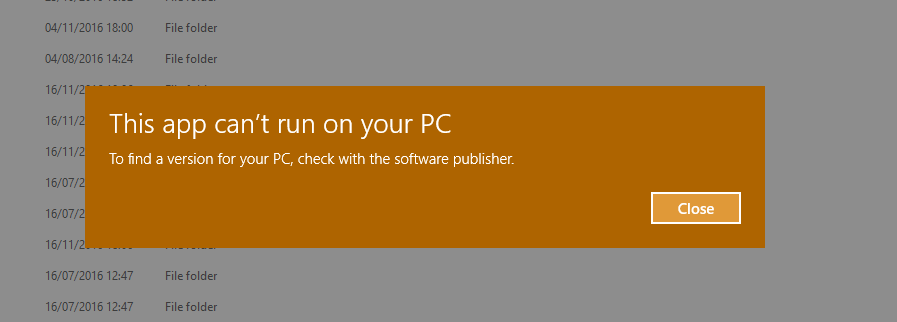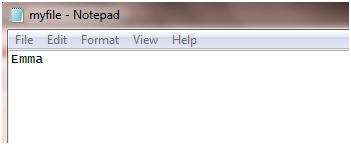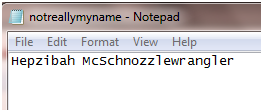Learned about RFID (radio frequency identification) tagging as part of TU100 last year. Recently tried this out by activating a Beat the Street card for the scheme running in Milton Keynes from 1 February to 22 March.
The cards, which are free, have a unique number and an activation code. You enter both while registering on the website at https://www.beatthestreet.me/miltonkeynes and it sets you up an account. The cards are used to ‘tap’ on Beat Boxes, which have been attached e.g. to lamp posts along footpaths across the town. The idea is that if you tap two within a certain time period, it gets registered as a journey and you get points. You can walk, run or cycle between Beat Boxes (I gather driving between them isn’t considered quite the thing).
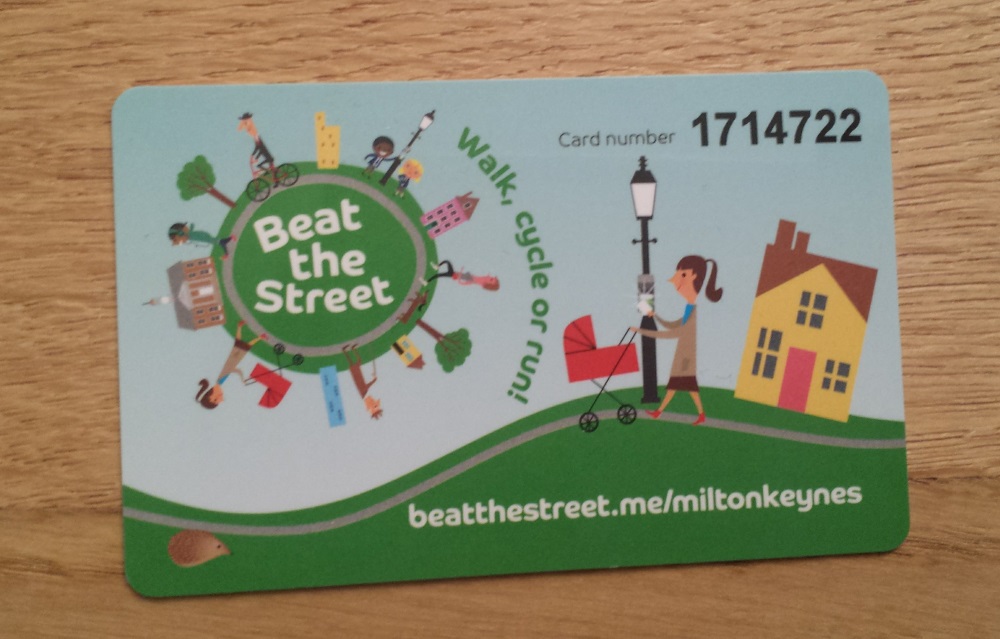 The scheme is about encouraging physical activity. The company behind Beat the Street is a Reading-based company Intelligent Health (who appear to be based on the Earley Gate side of the University of Reading's campus, near Temporary Office Building 1 where I used to work). They claim to make physical activity a way of life "through expertly delivered, measurable campaigns with long-term, community-wide benefits".
The scheme is about encouraging physical activity. The company behind Beat the Street is a Reading-based company Intelligent Health (who appear to be based on the Earley Gate side of the University of Reading's campus, near Temporary Office Building 1 where I used to work). They claim to make physical activity a way of life "through expertly delivered, measurable campaigns with long-term, community-wide benefits".
A number of my colleagues were doing this, so I decided I'd have a go. The downside has proved to be that, though it sounds a great idea, I've had very patchy success in getting the Beat Boxes to register my card. Taps on four different beat boxes one day last week only resulted in one actually lighting up, with the result that I didn't get any points. It's been reported that the MK scheme is unfortunately experiencing both technical issues and vandalism. Shame.
